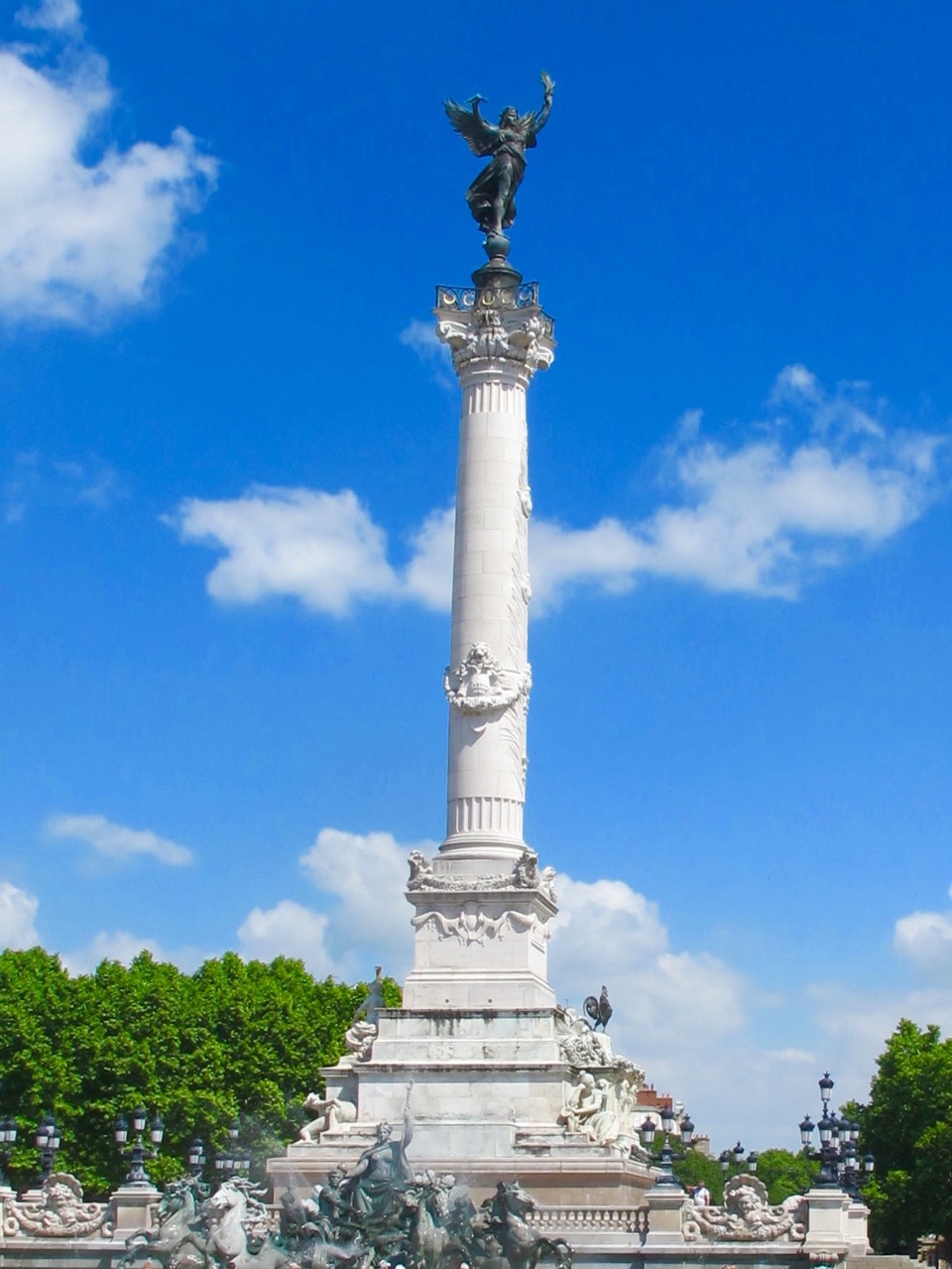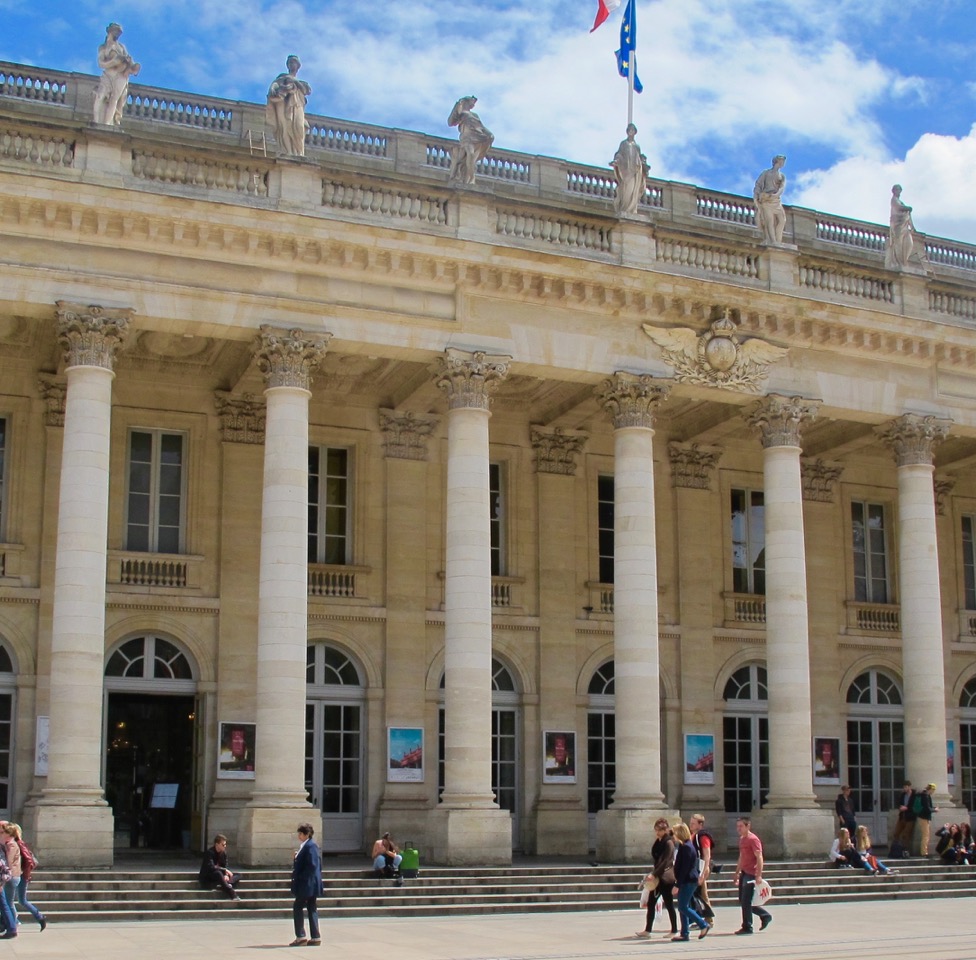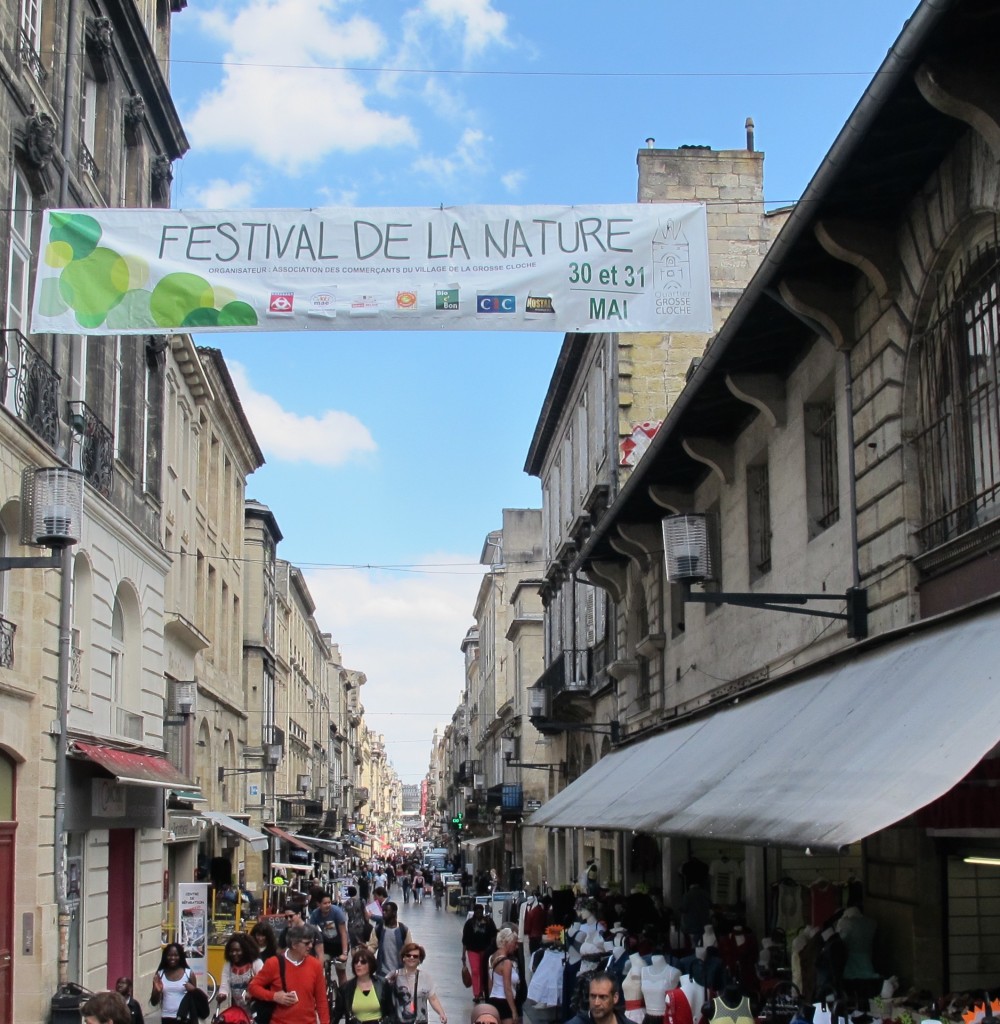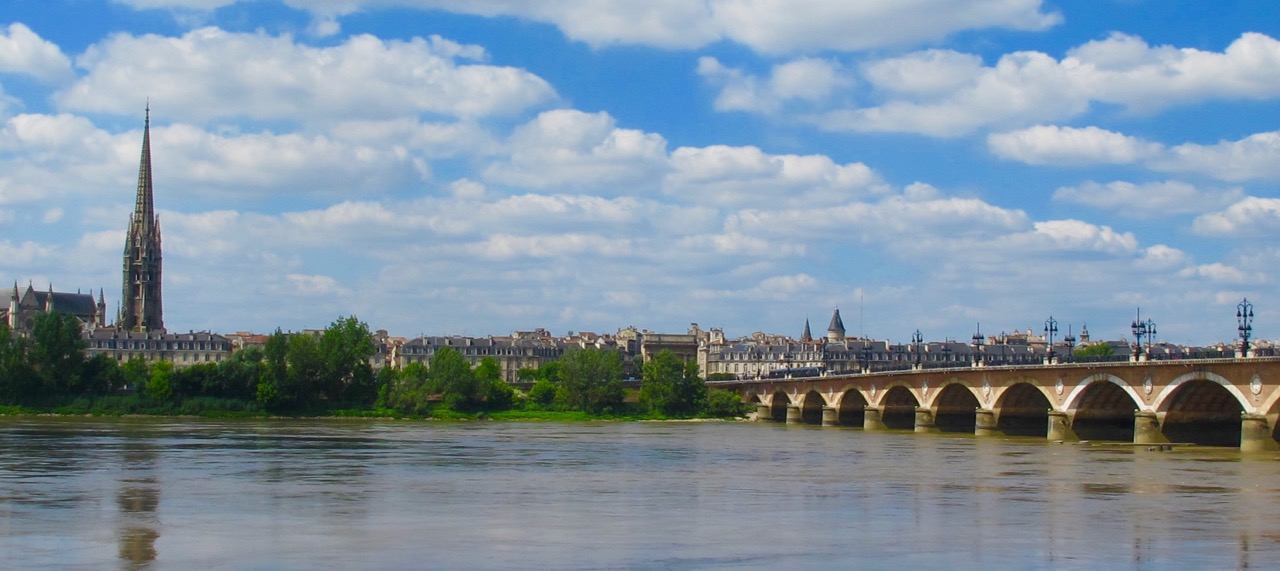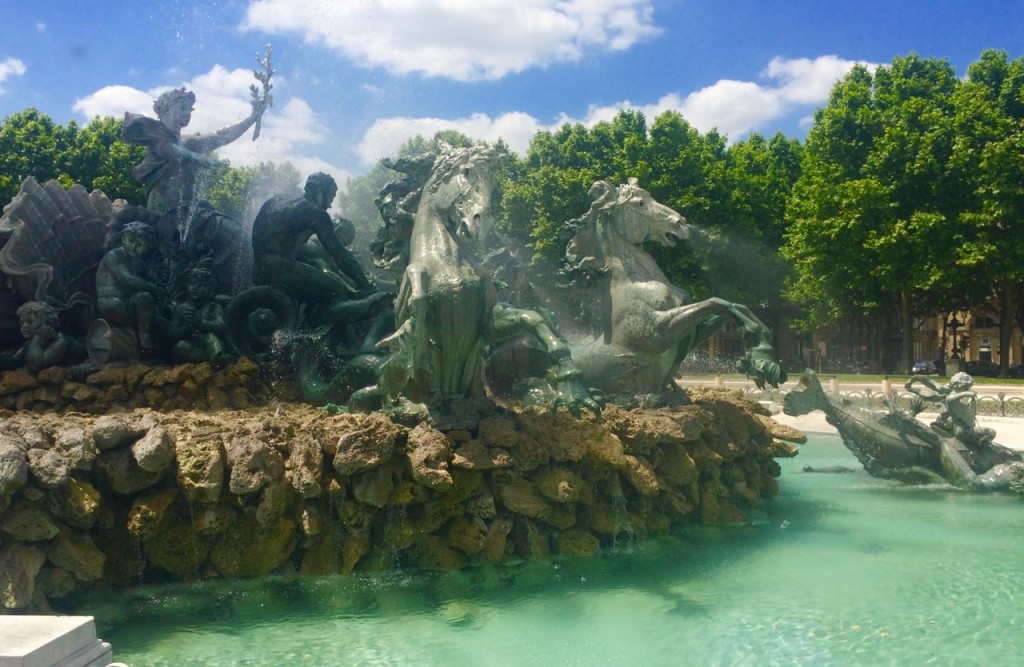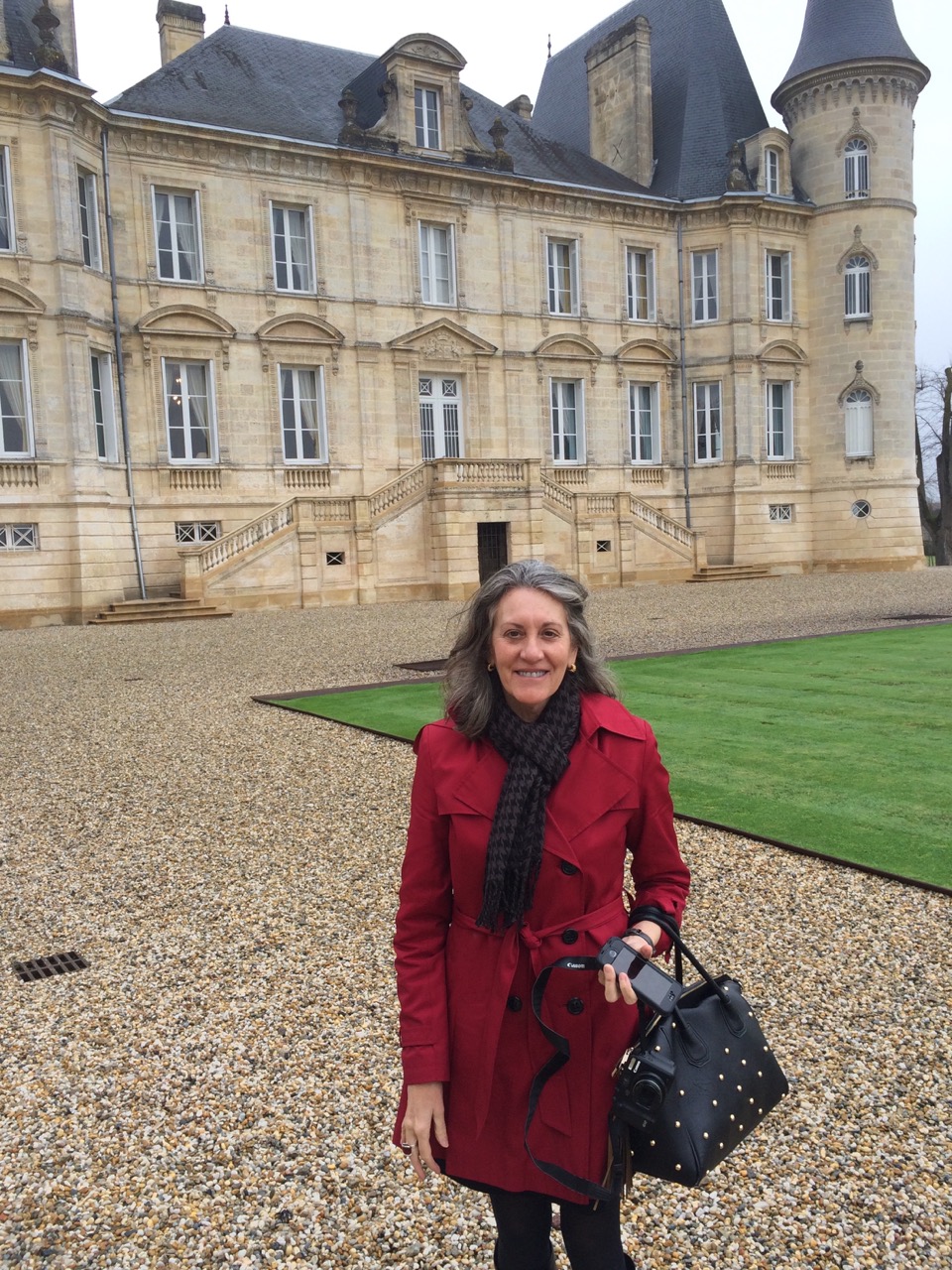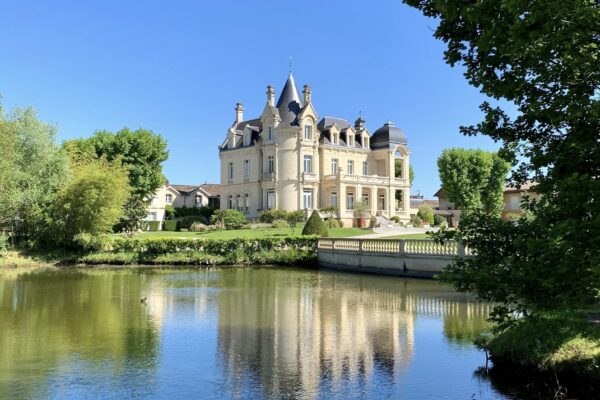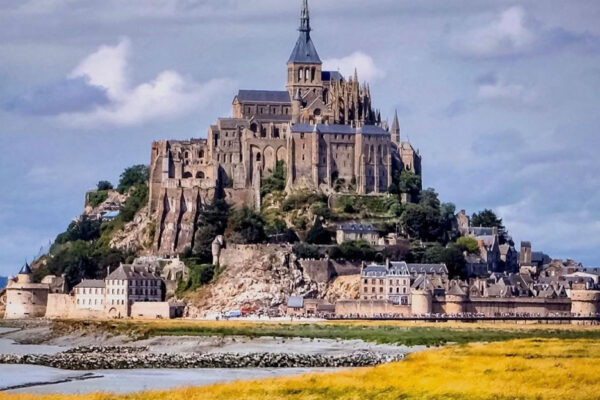Bordeaux: Port of the Moon

Porte Cailhau – built in 1494 is one of several gates to Bordeaux’s old city. Climb to the top for views of the port.
Text & photos by Marla Norman
Walking along Bordeaux’s main boulevards, flanked by the Garonne River, you might imagine that you’re in Paris. In fact, your sense of déjà vu is well-founded. Baron Haussmann, the celebrated 18th century architect, used Bordeaux as a model to transform Paris into the City of Light we know today.
Place de la Bourse, a massive stretch of neoclassical buildings and home to the regional Stock Exchange, resembles the Place Vendôme. A few blocks on, is the Place des Quinconces, an open, airy plaza that is the largest square in Europe – some 31 acres. The principal monument features an immense fountain with bronze horses, topped by a 177 foot (54 meter) column and statue representing liberty – every bit as heroic as the Parisian Fontaines de la Concorde.
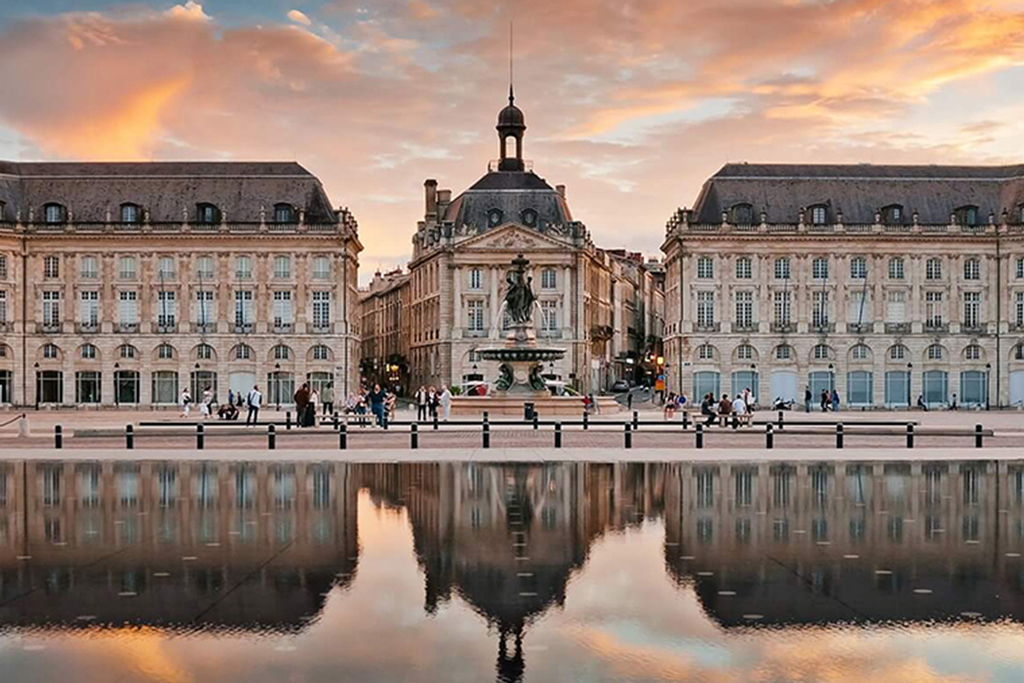
Place de la Bourse, Bordeaux’s regional Stock Exchange with the Miroir d’Eau water feature.
Just west of the Garonne, the Grand Théâtre is yet another superb masterpiece of neoclassical style. The building can accommodate over 1,000 spectators and offers exceptional acoustics.The Théâtre also marks the entrance to rue Sainte Catherine. At 1,250 meters or a little less than a mile, Sainte Catherine is the longest pedestrian street in Europe, with well over 250 shops.
In 2007, Bordeaux was named a UNESCO World Heritage site for its “outstanding urban and architectural ensemble, created in the Age of Enlightenment.” In 2015, the city was named the “Top Destination in Europe” and more recently, the New York Times listed Bordeaux #2 in its “52 Places to G0” citing La Cité du Vin and the transformation of over 7,500,000 square feet of former docklands into waterside attractions as part of a “stunning update.”
Bordeaux is all of this, and we haven’t even begun to talk about the wine!

Cité du Vin – an interactive museum with everything about wine. The futuristic building was designed by Anouk Legendre and Nicolas Desmazières to resemble an inverted carafe.
WINE WARS
Bordeaux’s destiny has always been tied to wine. The Romans planted the first grape vines in the region between 40-60 AD, after conquering the Celtic tribes that had originally settled it. An early wine trade prospered until the the fall of Rome in 400 AD, when germanic tribes invaded.
Bordeaux’s fortunes were significantly revived in the 12th century, when Eleanor of Aquitaine married Henri Plantagenet, who became King Henry II of England. Bordeaux flourished as the English acquired an insatiable taste for the local wines. Boatloads of “claret” shipped from the city’s crescent-shaped harbor, called Port de la Lune (Port of the Moon). But hostility towards English influence on French soil grew. Eventually war broke out and for over 100 years, the two countries battled for this prized corner of the world. The French eventually won at the Battle of Castillon in 1453 and Bordeaux’s fortunes rapidly declined as wine commerce with England abruptly ended.
By the 18th century, however, Bordeaux resumed international trade activity and Port de la Lune once again became a prominent distribution center. Most of the neoclassical buildings still visible today are from this golden period in the city’s history.

InterContinental Grand Hôtel de Bordeaux was designed by Victor Louis, who was also the architect for the Bordeaux Opera House.
But wine wars are still a part of life in the region. Now, they’re carried out in a spring ritual called en primeurs – when wine buyers from across the globe flock to Bordeaux to purchase “wine futures.” They troop through the spectacular châteaux to sample the newest vintages and compete for the rarest wines and best prices. Bordeaux is consumed in a heady delirium – not so much from the wine, but from the staggering prices, which can range up to thousands of dollars per bottle. Bordeaux and its wines are as coveted now as they were centuries ago.
BORDEAUX OVERVIEW
Start your tour of Bordeaux at the Office of Tourism, on 12 Cours du 30 Juillet, just down from the Place des Quinconces. Yellow open-air tour buses parked by the office make it easy to spot. Hop on one of the buses for a superb 60-minute tour of Bordeaux’s most important historical sites, including the Basilique Saint-Michel, Place de la Bourse and Castéja – the first school for the deaf, founded by Charles-Michel de l’Épée, who also invented sign language.
Additionally, the tour crosses the Garonne on the Pont de Pierre, for a sweeping view of both sides of the river. Built on the orders of Napoléon, Pont de Pierre has 17 arches – precisely the number of letters in the name of Le Petit Caporal himself.
After the tour, representatives in the Office of Tourism can assist you to book wine tours and visits to the Left Bank Châteaux, purchase tickets for the opera and art museums, or rent bikes, canoes and schedule cruises. The staff is exceptionally efficient and provides a number of resources for visitors.
For a top-down view of the city, climb the 160-foot Tour Pey-Berland at the Cathédrale Saint-André. The Gothic cathedral possesses an ornate 14th century chancel, rose window and stone carvings on the facade that are all well worth viewing.
PLACE DES QUINCONCES
Admire the iconic Monument aux Girondins, which towers over the square and the city itself. The 177 foot (54 meter) column was built in 1895 to commemorate the French Revolution and is topped by a statue representing liberty. During World War II, the spectacular bronze horses, sea creatures and goddesses – 34 statues in all – were seized by German soldiers to be melted down. Miraculously, years later, the statues were discovered in the city of Angers – were they were hidden by the French resistance. Finally restored in 1982, the statues and column are again the center attraction at the Place des Quinconces.
FROM LASCAUX TO COROT
Outside of Paris, Bordeaux offers the largest collections of art and museums of science & history in France. Both the Musée d’Aquitaine and Musée des Beaux-Arts contain one-of-a-kind treasures and are beautifully curated. Even a quick stroll is well worth the effort.
For a thoroughly detailed history of Bordeaux from the Stone Ages to modern times, visit the Musée d’Aquitaine. Highlights include life-size replicas of the Lascaux cave drawings – estimated to be 17,300 years old. Hauntingly beautiful, these Paleolithic drawings are even more astounding in that they depict animals that are now extinct.
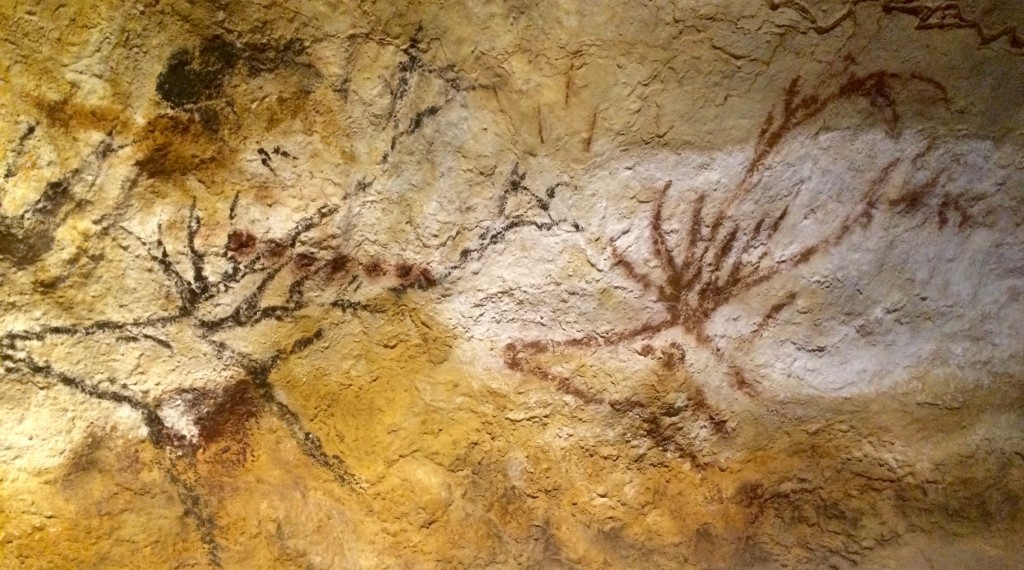
Replicas of the Lascaux cave drawings – estimated to be 17,300 years old at the Musée d’Aquitaine. Photo by Marla Norman
The museum has any number of significant Greco-Roman pieces – some of the most highly-prized include artfully-rendered statues of Jupiter from the 1st century and a bronze Hercules from the 2nd-3rd century. Also at the Musée d’Aquitaine is the tomb of Michel de Montaigne, one of France’s most beloved Renaissance writers and philosophers.
Amazingly detailed model ships illustrate the 19th century when Bordeaux began to export wine internationally and to manage large quantities of imported goods, such as chocolate, rum and petroleum.
At the Musée des Beaux-Arts, notable works include Olga Reading (Pablo Picasso), Martyrdom of Saint George (Peter Paul Rubens) Portrait of Bevilacqua (Henri Matisse), St. Dorothy (Paolo Veronese), and Diana Bathing (Camille Corot).
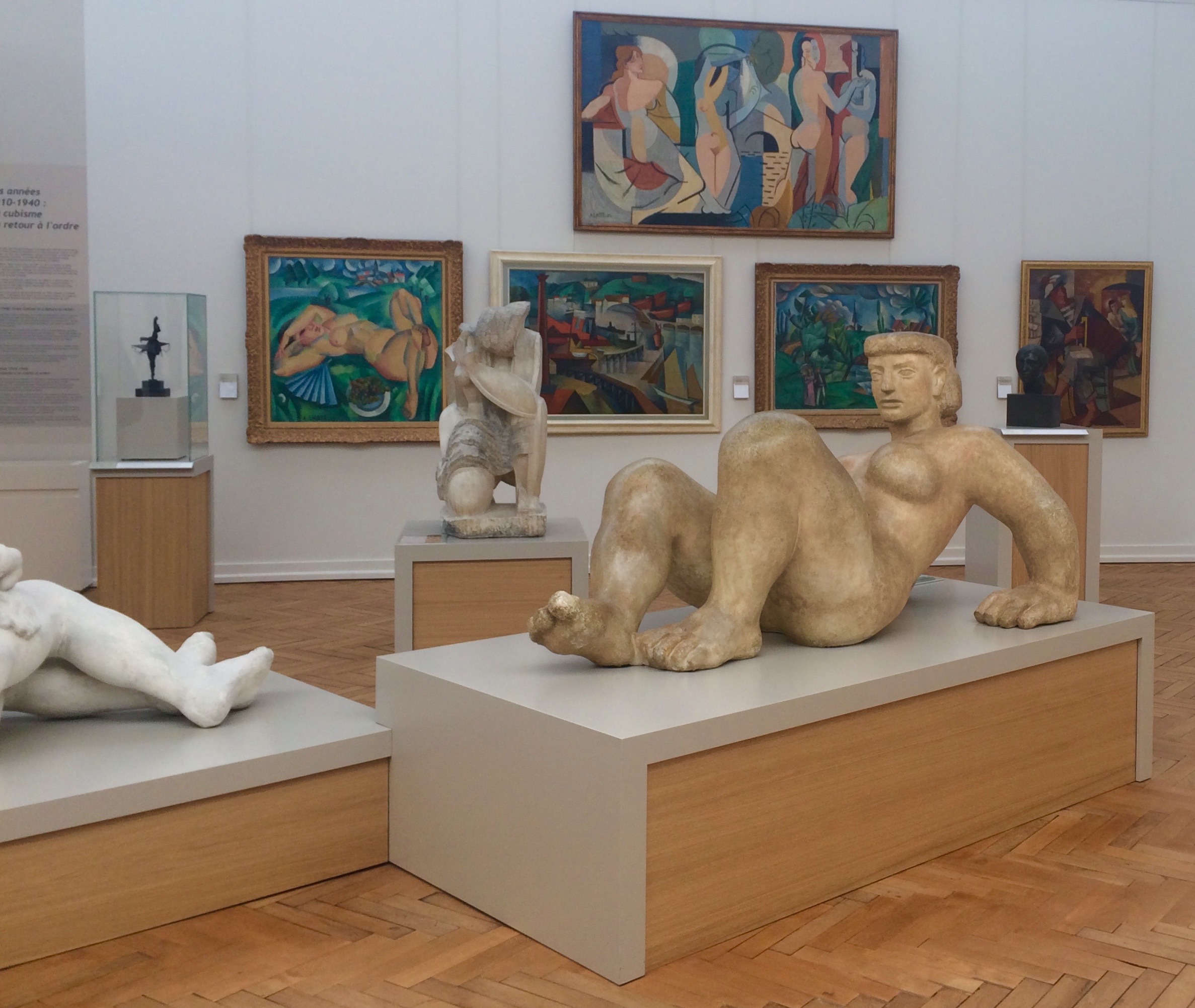
Paintings by Picasso, bronzes by Degas and massive sculptures by Bordeaux-native son Joseph Rivière at the Musée des Beaux-Arts. Photos by Marla Norman.
Paintings by Delacroix, Mary Cassatt, Odilon Redon, Pierre Bonnard and Titian are on display as well. Sculptures by Rodin and massive pieces by Bordeaux-native son Joseph Rivière are especially impressive. After visiting the museum, relax in the pretty formal gardens.
BORDEAUX’S WINE SCHOOL
Bordeaux has 57 different wine appellations – knowing about them is a daunting task, even for the most knowledgable wine experts. For a tasty initiation or more serious oneophilic studies, sign up for a class at the École du Vin de Bordeaux (Bordeaux Wine School). Courses range from two hours to 7 days. Private workshops can be arranged as well.
At the school’s Bar à Vin, you can drop by to simply enjoy a glass (or two) of the daily selections. Bottles are priced from €10-€55. The sommelier on duty will be happy to share tips about the regional wines, food pairing, wine storage or even the proper way to open a bottle of wine.
A votre santé!
Click on the red links for more information about the attractions and places mentioned in this article.


